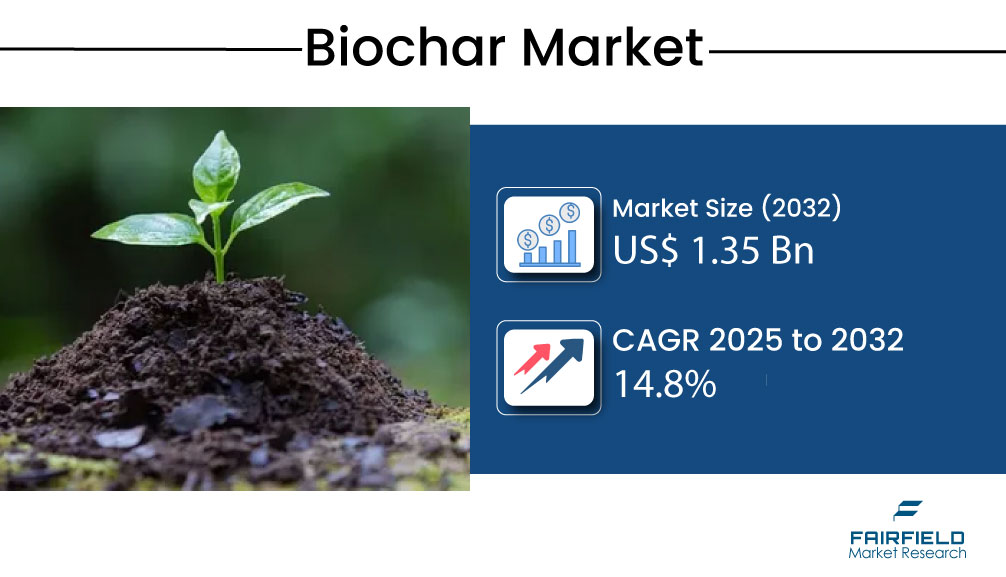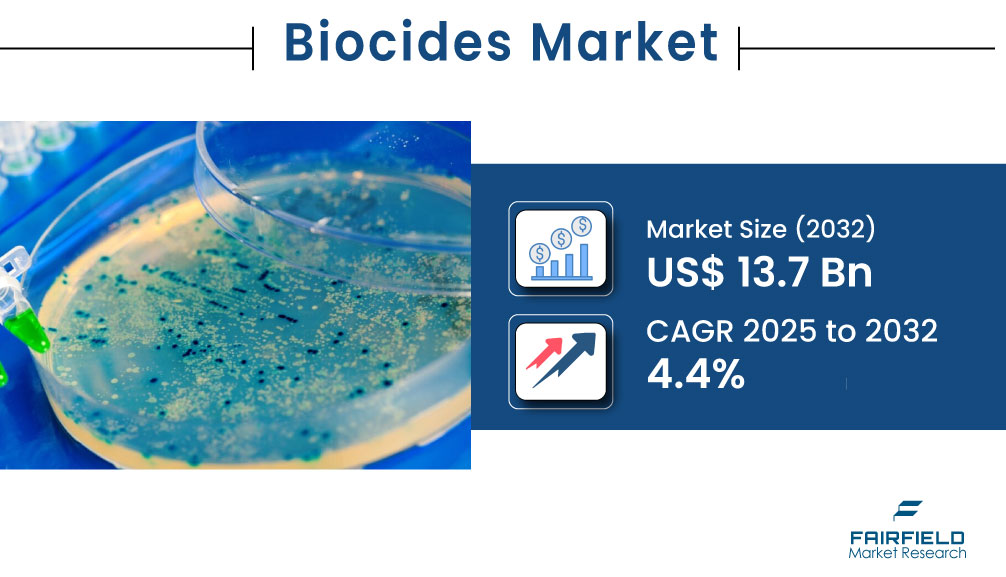Biochar Market Set to Transform Global Sustainability Landscape, Reaching US$ 1.35 Billion by 2032

Strong 8k brings an ultra-HD IPTV experience to your living room and your pocket.
The global biochar market is on a steep upward trajectory, with Fairfield Market Research projecting a rise from US$ 0.51 billion in 2025 to approximately US$ 1.35 billion by 2032. This strong growth, driven by a CAGR of 14.8%, reflects increasing adoption of biochar across regenerative agriculture, carbon removal strategies, sustainable waste solutions, and renewable energy integration.
𝐄𝐱𝐩𝐥𝐨𝐫𝐞 𝐭𝐡𝐞 𝐅𝐮𝐥𝐥 𝐑𝐞𝐩𝐨𝐫𝐭: https://www.fairfieldmarketresearch.com/report/biochar-market
Agriculture Leads Biochar Utilization Globally
Agriculture remains the cornerstone of biochar demand, expected to account for 69.2% of total market share by 2025. Farmers are increasingly adopting biochar to enhance soil fertility, retain moisture, and reduce dependence on synthetic fertilizers. These soil benefits align well with the growing global interest in organic and regenerative farming.
In animal agriculture, biochar is being used as a feed additive to reduce methane emissions and improve animal digestion. Meanwhile, its application in composting and anaerobic digestion systems supports better waste management and increased biogas output—boosting biochar’s relevance in circular economy models.
Pyrolysis: The Leading Technology for Scalable Biochar Production
Pyrolysis technology is set to dominate the market, holding an estimated 87.9% share of global biochar production in 2025. The process converts organic biomass into stable biochar under low-oxygen conditions, while simultaneously producing syngas and bio-oil—both of which can be used for clean energy generation.
Pyrolysis is valued for its high efficiency, broad feedstock compatibility, and capacity to generate carbon-rich, consistent biochar products that qualify for emerging carbon markets.
Key Challenges: Low Awareness and Access Limitations
Despite positive trends, the biochar market still faces major hurdles. A widespread lack of awareness—especially in developing regions—continues to slow adoption. Many stakeholders are unfamiliar with biochar’s full potential across soil health, crop yields, emissions reductions, and carbon sequestration.
Additionally, technical barriers such as the complexity of pyrolysis systems, lack of standardized product quality, and high upfront costs pose challenges for small and mid-sized producers. To overcome these, greater public and private sector collaboration is needed—especially through education, outreach programs, and financial incentives.
Carbon Market Integration Unlocks New Revenue Potential
A key growth opportunity for the biochar industry lies in its growing recognition within voluntary carbon markets. Biochar’s ability to store carbon in soils for hundreds to thousands of years makes it an ideal solution for long-term carbon removal. As companies worldwide seek to meet net-zero commitments, many are turning to biochar-based projects for carbon credit purchases.
Countries like Australia and Japan are leading the way by launching centralized platforms such as the Australian Carbon Credit Units (ACCUs) and J-Credits. These systems streamline the crediting process and help boost transparency and confidence for investors, while also supporting high-impact carbon removal projects—including those based on biochar.
Integrated Biochar-Energy Models Provide Dual Value
An emerging trend in the biochar industry is the integration of pyrolysis units with renewable energy systems. This model allows producers to simultaneously generate biochar for agricultural and environmental applications, clean energy from syngas, and carbon credits for verified sequestration—offering triple revenue potential.
This multifaceted value has attracted climate-focused investors and corporate sustainability leaders. In 2024, Shopify invested US$ 36.3 million in carbon removal initiatives, supporting biochar startups including BIOSORRA, Applied Carbon, MASH Makes, and Planboo. These projects aim to scale biochar operations globally while contributing meaningfully to climate targets.
Regional Outlook: Asia Pacific Dominates, Europe Gains Momentum
Asia Pacific is expected to lead the global biochar market with a commanding 53.8% share in 2025. China, India, and Australia are at the forefront of biochar production and application, supported by robust agricultural activity, government initiatives, and growing concern over soil degradation and crop yields.
North America is poised to generate the highest absolute dollar opportunity, with US$ 181.8 million in incremental revenue forecast between 2025 and 2032. The region’s focus on sustainable agriculture, clean energy transitions, and carbon removal frameworks will support significant expansion.
Europe is forecast to experience the fastest growth, with an expected CAGR of 18.3% through 2032. Strong regulatory frameworks, environmental certifications, and the EU’s climate neutrality goals are propelling the region’s adoption of biochar across farming, construction, and industrial decarbonization applications.
Competitive Landscape: Expansion, Innovation, and Climate Alignment
As demand accelerates, competition is intensifying within the biochar space. Companies are focused on expanding production capacity, enhancing technology, securing carbon credit validation, and diversifying applications.
In 2024, Swedish industrial firm Höganäs AB announced plans to build a biochar production facility aimed at supporting fossil-free metallurgical processes. The company is also investing in R&D to refine biochar-based reduction techniques in heavy industry, signaling a broader shift toward industrial decarbonization.
Expert Perspectives: Turning Waste Into Climate Value
Experts estimate that more than 1.4 billion tonnes of agricultural waste are produced globally each year. Much of it is burned or left to decay, emitting greenhouse gases. Biochar production offers a way to turn this underutilized biomass into a valuable resource—enhancing soil performance and permanently locking carbon into the ground.
As carbon offset markets grow and sustainability strategies mature, biochar is being recognized not only as a climate solution but also as a scalable, economically viable asset in the fight against global warming.
Global Biochar Market Segmentation
By Technology:
Pyrolysis
Gasification
By Application:
Agriculture
Power Generation
Livestock Farming
Others
By Region:
North America
Europe
Asia Pacific
Latin America
Middle East & Africa
Note: IndiBlogHub features both user-submitted and editorial content. We do not verify third-party contributions. Read our Disclaimer and Privacy Policyfor details.







